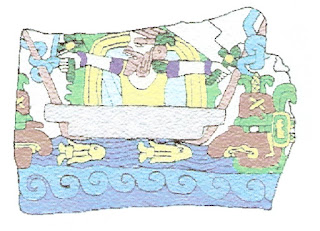Fe-oh
Horned One, Wild in the Walds,
Wild as the Wild-Fire,
Fierce force of the forests.
Ur
Might of the Ur-Ox,
Force wielded by Ingwe,
Horns holler, rune-roarer.
Thorn
Sleep-thorn that pricks the Sleeping-Goddess,
Idunn sleeps 'neath the White Wolf-Skin;
Thorn of Awakening - awaken the Dawn.
Os
Woden the Wizard,
Wielder of word-might,
Oski and Omi - roarer of runes.
Rad
Wheel of Right Order,
Rita and Ritual,
Riding the Right Road.
Ken
Fire of the Dragon,
Kon-Fire of Konungr,
Forge of the Smith.
Gyfu
Gift-giver, gold-giver,
Gift from the Gods,
Gift to the Folk.
Wyn
Wise Woden - Wild Huntsman,
Ride wild in the Woods,
Winsome and wholesome, runes of perfection.
Haegl
Hael-Rune, Hail-Rune, Hail from the heavens,
Bane of the Serpent
Brings wholeness and health.
Nyd
Need-Sword of Sigmund,
The Volsunga Warrior,
The Sword that was broken,
Reforged by Sigurd.
Is
The Sword from the Oak-Tree,
The 'I' is renewed, the iron reforged,
Sword of the Volsungs.
Ger
Ar-Rune of the Eagle,
Law of the Ar-Kan, the wheel ever turns,
Reaping good harvest.
Eoh
Wuldor-father, Glory-father,
Ski-God, Bow-God - Wolf-lord of kin,
The evergreen Yew-Tree.
Peorth
Wondrous Wyrd, Weaver of the Web;
Worthy the Word-Sword
Wielder of woes.
Eolhs
Wound-wielder, Elk-Twins,
White Hart of England,
War-Warriors in the Wasteland.
Sigel
Sons of the Sun - Glory of Light;
The Serpent of Wisdom -
Light of the Solar-Race;
Creative Light of the Black Sun -
The Hidden Sun.
Tir
Sky-Father, Father of Kin,
Shining One, Father of Law, Bringer of Justice;
God of the Tribe.
Beorc
Birth-Goddess, Goddess of Dawn,
Berkan, dance upon the Edel-Lands,
Renew the Edel-Lands.
Eh
Hengest and Horsa, Horse-Twins of the English,
Founders of this Holy Land;
Hengest wielded the Sword of the Hun.
Man
Rune of Manu - Hama, the Shining Ase;
Awaker of Gods and Men,
Rig-Hama brings the Law of Kin.
Lagu
Ur-Law and Ar-Law, Leech-Law, Lacnunga,
Virile Power of the Holy Gods,
The Might of the Warrior.
Ing
Rune of the Hero - Ing-Lord of Ing-Land,
Ing, Son of Man-nus, founder of Folkdom,
Lord of the Age - Lord of the Kin.
Daeg
Darkness to Light - Night turns to day,
Dawn is ever the hope of Men,
Hail the New Dawn!
Edel
Rune of the Homeland, At-al-land sunken,
Thule is awoken in the hearts of men,
Noble-born folk, akin to the soil.
Ac
Strength of the Oak-Tree,
Lore of the Wise,
Earth-born to water, new worlds enfolding.
AEsc
Woden - Wise Ase of Asgard, Ash-God and Spear-God,
Ancestral-God, Ancestral Spirits,
Strength of the World Ash - Tree of the Folk.
Yr
Ur-Tribes of the Wolf,
Wielding the Word-Sword,
The worlds are awoken.
Ior
From Earth to Water - change-rune of the serpent,
Hope can be kindled,
When burst are the chains of restriction.
Ear
Earth-grave is horror to the Light-Born,
To the AEthlinga who takes up the struggle,
Straw-death is for the herd-like.
Cweorth
Rune of Valhalla - Way of the Gods,
The Way of the AEthlinga - Fire-Snake awoken,
Rune of Transcendence.
Calc
The Mysteries of Death - releasing the fetters
Cup of the Gra-al,
The Horn of Plenty.
Stan
Stone of the White Horse,
Grave-mark of Horsa,
Wyrd set the Stone of Ing.
Gar
Stone of the Wise - Stone of Ing,
Gift of Ing given to the Inga-Folk;
Hidden in the Holy Blood -
Power of the Spear of Woden.


















